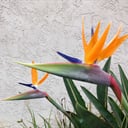Which female Aztec deity is connected with sexual fecundity, often symbolically associated with flowers?
While the Aztec world includes several female goddesses associated with earthly qualities, Xochiquetzal is connected with agricultural and sexual fecundity. Depicted as an alluring youthful woman, she is typically portrayed in richly attired accoutrements and symbolically associated with vegetation and in particular flowers.
She is part of the Aztec mythology also called Ichpochtli, meaning “maiden” who served as the protector of young mothers. Also, she was a patroness of pregnancy, childbirth, and the crafts practiced by women such as weaving and embroidery.
By connotation, Xochiquetzal is also representative of human desire, pleasure, and excess, appearing also as patroness of artisans involved in the manufacture of luxury items. Worshipers wore animal and flower masks at a a festival, held in her honor every eight years.
The Greek equivalent is Aphrodite.
The name ‘Xochiquetzal’ is a compound of ‘xochitl’ meaning flower and ‘queetzalli’ meaning ‘precious feather’. In Classical Nahuatl (language) morphology, the first part of the name modifies the second and as a result, the goddess’ name can literally mean “flower precious feather”.
More Info:
en.m.wikipedia.org








